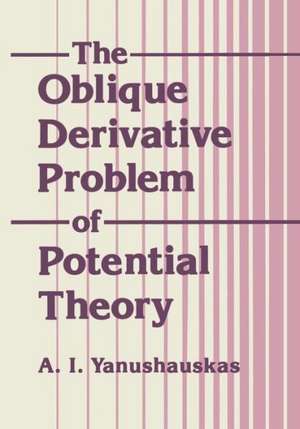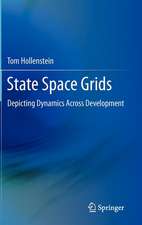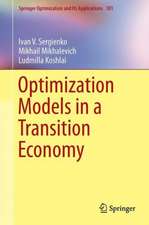The Oblique Derivative Problem of Potential Theory: Monographs in Contemporary Mathematics
Autor A.T. Yanushauakasen Limba Engleză Paperback – 6 apr 2012
Preț: 390.08 lei
Nou
Puncte Express: 585
Preț estimativ în valută:
74.67€ • 81.13$ • 62.76£
74.67€ • 81.13$ • 62.76£
Carte tipărită la comandă
Livrare economică 21 aprilie-05 mai
Preluare comenzi: 021 569.72.76
Specificații
ISBN-13: 9781468416763
ISBN-10: 1468416766
Pagini: 264
Ilustrații: 260 p.
Dimensiuni: 178 x 254 x 14 mm
Greutate: 0.46 kg
Ediția:Softcover reprint of the original 1st ed. 1989
Editura: Springer Us
Colecția Springer
Seria Monographs in Contemporary Mathematics
Locul publicării:New York, NY, United States
ISBN-10: 1468416766
Pagini: 264
Ilustrații: 260 p.
Dimensiuni: 178 x 254 x 14 mm
Greutate: 0.46 kg
Ediția:Softcover reprint of the original 1st ed. 1989
Editura: Springer Us
Colecția Springer
Seria Monographs in Contemporary Mathematics
Locul publicării:New York, NY, United States
Public țintă
ResearchCuprins
1. Foundations of Potential Theory.- 1. Harmonic Functions and Potential Theory.- 2. Green’s Formula and Its Consequences.- 3. Basic Boundary Problems of Potential Theory.- 4. Investigation of Boundary Problems by the Method of Integral Equations.- 5. Harmonic Functions in Axially Symmetric Domains.- 6. General Second-Order Elliptic Equations.- 7. Functions Represented by Potential-Type Integrals.- 8. Gradient Vector Fields of Functions.- 2. Oblique Derivative Problem for Elliptic Equations.- 1. Reduction of the Oblique Derivative Problem to Fredholm Integral Equations.- 2. Reduction of the Oblique Derivative Problem for Harmonic Functions to Fredholm Equations.- 3. Simplest Properties of the Non-Fredholm Oblique Derivative Problem.- 4. Global Methods of Investigation of the Non-Fredholm Oblique Derivative Problem.- 3. Oblique Derivative Problem with Direction of Differentiation Going into the Tangent Plane.- 1. Simplest Consequences of the Maximum Principle.- 2. Generalizations of the Argument Principle.- 3. Measure of Overdeterminedness of the Oblique Derivative Problem.- 4. Oblique Derivative Problem with Polynomial Coefficients.- 5. Reduction of the Oblique Derivative Problem to a Fredholm Integrodifferential Equation.- 6. Boundary Problem for a System of Harmonic Functions.- 4. Systems of Partial Differential Equations Related to Multidimensional Generalizations of the Cauchy-Riemann System.- 1. Analog of the Riemann-Hilbert Problem.- 2. Generalization of a Holomorphic Vector.- 3. Second-Order Systems of Equations.- 4. Elliptic Systems Depending on a Parameter.- 5. Oblique Derivative Problem for Harmonic Functions of Two Variables.- 1. Boundary Properties of Conjugate Harmonic Functions.- 2. An Auxiliary Problem.- 3. Oblique Derivative Problem.- 4. ObliqueDerivative Problem with Discontinuities in the Boundary Condition.- 5. Variation of Level Lines of a Harmonic Function of a Closed Contour.- 6. Multiply Connected Domains.- References.
























